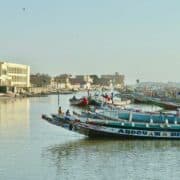ELT enrolment in the Philippines on the rise
The Philippines has become an increasingly popular destination for English Language Training (ELT), particularly so for students from Japan and Korea. As the government ramps up efforts to market the country as an ELT destination of choice, students from further afield are being drawn to the Philippines for its affordable prices, superb beaches, and strong global ranking in English proficiency tables.
Growth lead by Korea and Japan
The Philippines, an officially bilingual island nation of approximately 100 million, is positioning itself as a reputable education centre for English language learners. Asian students - especially those from Korea and Japan - are drawn by the country’s proximity and exceptional value relative to traditional ELT destinations, such as the US or the UK. According to the Philippines Ambassador to the United States, Jose L. Cuisia, Koreans are leading this growth. "There are more and more Koreans that are studying English in the Philippines,” said the Ambassador in a 2015 interview with VOA Learning English. “In 2004, there were about 5,700…The following year, it tripled to about 17,000, in 2012 it was about 24,000. So we’re seeing an increasing number of Koreans. But they’re also from other countries: Libya, Brazil, Russia." While finding precise figures on the number of ELT students in the country is a challenge, 31,000 Special Study Permits (SSPs) were issued in 2012 to students on short courses of less than a year. Most of these were for ESL courses. Of those, 24,000 went to Korean students. This represents a three-fold growth over 2005 enrolment levels. Since these 2012 figures, the only reliable statistics obtained from the Department of Tourism are from an association of schools selling to the Japanese market. These figures show that around 35,000 Japanese students travelled to the Philippines to learn English in 2014. Budget-conscious Japanese and Koreans are drawn by the no-frills approach to learning English in the country. An English language course lasting several weeks, including accommodation and meals, costs between US$800 to US$1,600. That’s less than half the cost of similar programmes in the US or Europe. The Philippines appears particularly well-placed to attract beginner ELT students, according to Shota Furue, a Japanese student who has studied English in the United States and the Philippines. While he believes the US is a better option for advanced learners, he recommends the Philippines for beginners. "[Filipinos] speak English as a second language. . .when they’re a child they learn English and they know the difficulty of speaking English… For beginners it’s better to study in the Philippines." Meanwhile, the Philippines’ attractive price point also lures status-conscious Korean families unable to pay the high costs of traditional ELT destinations, but keen on demonstrating English proficiency at home. Speaking to The Wall Street Journal, Jasper Kim, a professor in the Division of International Studies at Ewha Women’s University in Seoul, says the affordability of English programmes in the Philippines helps level the playing field for the children of the Korean non-elite. English fluency, he points out, continues to be an important marker of status in Korea. "It shows you are from the right economic class. That your family is connected,” he says. “Everyone needs to have an option to learn another language."
ELT providers set sights on the Philippines
While South Koreans were the first to establish English schools in the country, growing demand continues to drive the rise of new providers, from smaller operations to larger-scale schools combining traditional and online approaches. QQ English, for example, a Japanese conversation school based in Cebu province, opened its second location last year. Its owner, Raiko Fujioka, has even grander plans. "My dream is to make QQ English the largest and highest-quality English conversation school in the world, employing 100,000 Filipinos," he recently told The Asahi Shimbun. QQ’s approach combines online programmes with classes taught in person, allowing students who take the online programmes to visit the Philippines when they have vacation time of a week or longer. The school also makes the most of its infrastructure. Around 600 Filipino instructors work in two shifts. They supplement teaching daytime classes with online programmes in early morning and late at night. In total, nearly 80% of the approximately 10,000 students registered in the online programmes are Japanese. Others hail from China, South Korea, Russia, and Iran. Increasingly, students from outside the region – including those from Russia, Brazil, Iran, and Libya - are choosing the Philippines. For Russian student Maria Dobroskokina, for example, enrolling in QQ English was an ideal choice. While Russians’ well-known love of warm weather makes Malta a desired destination for many, the Philippines’ lower cost of living can make a difference. "On Cebu, the total cost, including accommodation and daily expenses, is about a half that of Malta. I was able to afford one-on-one lessons. I feel I made big progress with my English in four months here," Dobroskokina told the Nikkei Asian Review.
Filipino English a draw
Many commentators note the high level of exposure to English in daily surroundings as a key advantage to learning the language in the Philippines. A blog post by Amy Chavez in the Huffington Post outlines why daily exposure to English in the country provides the perfect context for language acquisition by foreign learners. In addition to the Philippines retaining English as an official language as one legacy of the American occupation of the country (1898-1946), Ms Chavez points out how English is viewed as a means of communication, rather than simply a subject learned in school. Nowhere is this more evident than in the cities, towns, and streets of the country, where English and Tagalog mix easily, from taxi conversations to radio programmes to bilingual and English-only roadside signs. "One cannot overemphasise the role of exposure in learning a second language," says Ms Chavez. "Not only does it allow people to experience the language firsthand, in real situations, but exposure provides reinforcement, something Asian students rarely get outside the classroom." Indeed, while there are concerns in some quarters about the quality of English being taught, given the dual prevalence of English and Tagalog, or "Taglish", Ms Chavez points out that English proficiency across the country is high. "According to an Educational Testing Service (ETS) ranking based on TOEFL (Test of English as a Foreign Language) scores for 2011", she writes. "The Philippines ranked 35th out of 163 countries worldwide. The only other Asian countries to score higher were Singapore (ranked 3rd in the world with a score of 98), and India (19th with a score of 92). Malaysia tied the Philippines for 35th place with a score of 88."
Destination Philippines
In order to harness the Philippines’ growing appeal as an ELT destination, the government has begun to market itself more aggressively. The country brands itself as the "third largest nation of English speakers", the ideal place to combine relaxing, short-term beachside vacations with English learning. ESL travel packages are marketed to foreigners directly through the Department of Tourism website. The site underscores the wide use of English in the Philippines - over 93.5% of Filipinos can speak and understand English well – as well as its use in business settings and as a language of instruction in schools and universities. Special Student Permits (SSPs) can be obtained relatively easily for up to one year of study. While there have been some concerns over a lack of an accreditation system for ELT providers, new schools continue to appear. There are now hundreds of private and public schools in the Philippines that teach English or teach in English. More advanced students can also take regular university academic courses in English. Pearl Gaborno-Ilustre, the Chief Academic Officer at the TESOL Training Corporation in Manila, adds, "One doesn’t really learn language by studying grammar; we learn language by actually using it. . . And the Philippines is moving toward an outcomes-based education, which means that skills taught in the classroom, or concepts taught in the classroom should have concrete goals or outcomes, outputs from the students." Indeed, the Philippines’ Asian neighbours, impressed by the country’s enviable position in global English proficiency tables, are considering how they might learn from the Philippines’ example. An opinion piece in The Japan Times suggests Japan would do well to consider the Philippines’ approach to targeting foreign students. "If the [Japanese] government hopes to meet its goal of attracting 300,000 international students to Japanese universities by 2020, it should consider how the Philippines has significantly increased its foreign student enrolment: Top universities in the country teach all their classes in English." Clearly, in an increasingly competitive ELT field, the Philippines has carved out a niche as an inexpensive, warm weather option for English language learners. As ELT numbers continue to rise, other study destinations, keen on emulating the Philippines’ success, are sure to take notice.
















